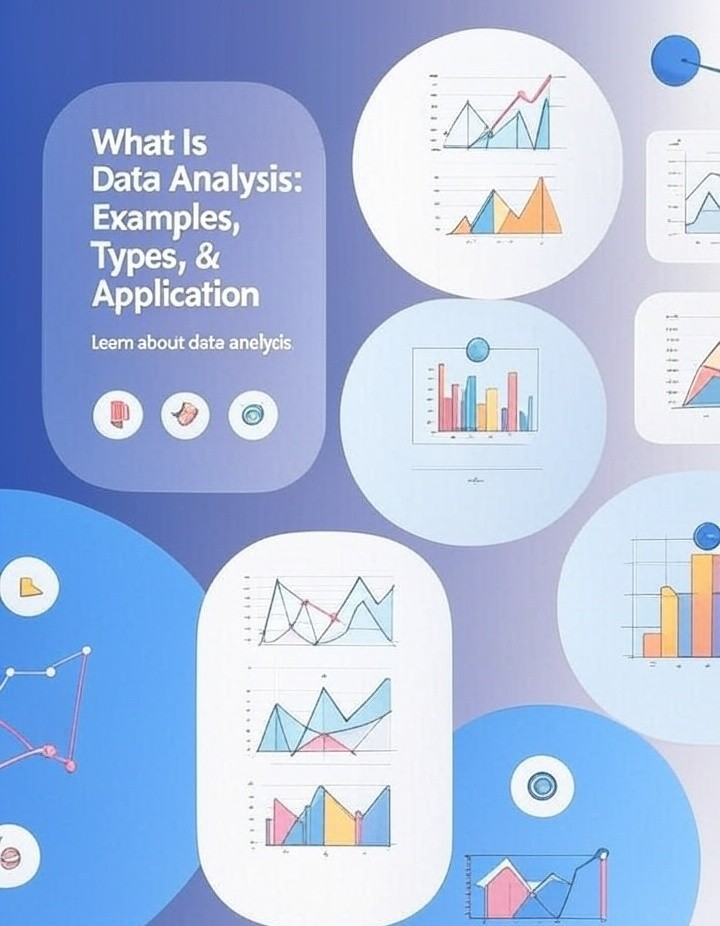
What Is Data Analysis: Examples, Types, & Applications
Data analysis involves applying statistical and logical techniques to describe, illustrate, condense, recap, and evaluate datasets. By organizing, cleaning, and examining data, analysts uncover patterns and trends that answer “what happened,” “why it happened,” and “what might happen next.”
Four Core Types of Data Analysis
1. Descriptive Analysis
– Answers “What happened?” by summarizing past data into dashboards, reports, and statistics (mean, median, frequency) to reveal historical performance.
2. Diagnostic Analysis
– Explains “Why did it happen?” through techniques like correlation, drill-down, and root-cause analysis to identify factors behind observed outcomes.
3. Predictive Analysis
– Forecasts “What is likely to happen?” using statistical models, time-series forecasting, and machine learning to anticipate future trends based on historical data.
4. Prescriptive Analysis
– Recommends “What should we do?” by combining insights from descriptive, diagnostic, and predictive stages to suggest optimal actions and strategies.
Additional Analysis Methods
Beyond the four pillars, organizations often employ:
· Exploratory Data Analysis (EDA): Visual and statistical examination of data to formulate hypotheses.
· Inferential Analysis: Drawing conclusions about populations from sample data via hypothesis testing.
· Causal & Mechanistic Analysis: Establishing cause-effect relationships using experiments or instrumentation.
· Cluster & Cohort Analysis: Grouping entities by similarity or shared characteristics for targeted insights.
· Sentiment & Text Analysis: Applying natural language processing to extract opinions or themes from unstructured text.
· Simulation Techniques (e.g., Monte Carlo): Modeling complex systems under uncertainty to assess risk and variability.
Real-World Examples
· Sales Trend Analysis (Descriptive): Retailers chart quarterly revenues to identify peak seasons and adjust inventory.
· Customer Segmentation (Diagnostic & Cluster): E-commerce platforms group shoppers by behavior to personalize marketing.
· Demand Forecasting (Predictive): Airlines use historical booking and seasonal data to optimize flight schedules and pricing.
· Supply Chain Optimization (Prescriptive): Grocery chains integrate forecasts and lead-times to automate reorder points and minimize stockouts.
· Sentiment Analysis (Text): Brands analyze social media posts to gauge product reception and inform PR strategies.
· Risk Assessment (Inferential & Simulation): Insurers deploy regression and Monte Carlo simulations to price policies and manage reserves.
Applications Across Industries
· Healthcare: Patient data analytics improve diagnostics, personalize treatments, and forecast resource needs.
· Finance: Fraud detection systems monitor transaction patterns; algorithmic trading models leverage predictive analytics.
· Marketing: A/B testing and sentiment analysis refine campaigns and enhance customer engagement.
· Manufacturing: Quality control uses statistical process control and mechanistic analysis to reduce defects.
· Government & Policy: Demographic and economic analyses guide public policy and allocate resources effectively.






